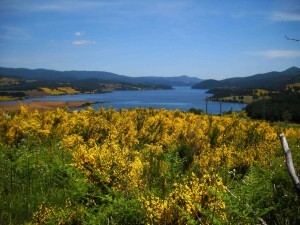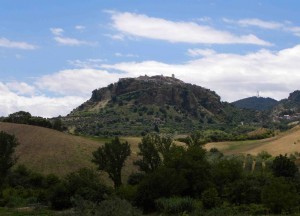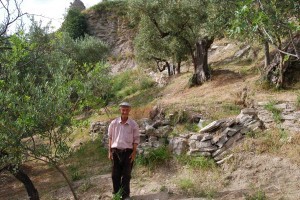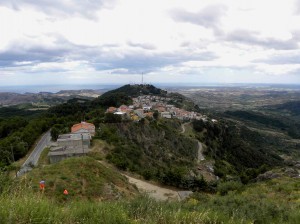They also learned how to tell what direction the river was flowing in– a tricky task. We looked for imbricated clasts. These are clusters of thin, flat clasts (not round ones) that are pushed by the current until their flat side is facing upstream. We measured the direction that the clasts were stacked to determine which way the river was flowing. With these two pieces of information (clast provenance and current direction) from a number of outcrops around the area, we are able to recreate the Crotone Basin’s drainage flow.
My parents were struck by the tranquility of my field area. We passed through a few small towns on our first day working, but the second day we drove 50 kilometers and saw only fields, cows, and goats. What I really wanted to show my parents was the attitude of the people.





